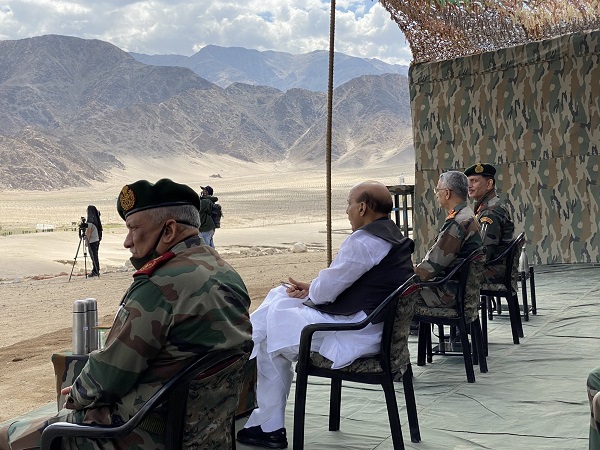
New Delhi, (Samajweekly) To expand the domestic defence manufacturing ecosystem, a negative list of weapons and platforms would be notified with year-wise timelines for placing an embargo on import of such items from those dates.
As per the draft Defence Production and Export Promotion Policy (DPEPP 2020) announced on Monday, this list would be updated periodically, without compromising on the operational requirements of the Services, to allow lead-time to industry to prepare itself for any such procurement which is likely to come up, subsequent to the indicated embargo date.
The policy proposes a Technology Assessment Cell (TAC) in coordination with the services, which would assess the industrial capability for design, development and production including re-engineering for production of various major systems like armoured vehicles, submarines, fighter aircraft, helicopters, radars with the major industries in the country.
A Project Management Unit (PMU), with representation from the Services, would be set up to support the acquisition process and facilitate management of the contracts. This setup would bring in expertise to the process of acquisition as well as create focus and synergy in building military capabilities.
With self- reliance as the motto, aim is to move away from licensed production to Design, Develop and produce wherein the Nation owns the Design Rights and IP of the systems.
“Our Armed forces have over the years acquired a range of platforms from diverse sources leading to a buildup of spares and consumables which has resulted in sub-optimal planning and resource allocation. Efforts would be made to adopt a family of weapons approach to standardize and optimize inventory and supply chain management,” the policy said.
In addition, efforts would be made to provide the industry greater visibility into the likely opportunities in the defence sector. Understanding future capital acquisition priorities will enable industry to develop technologies, carry out necessary ground work and position themselves in an optimal manner to compete at the appropriate time.
In order to enhance procurement from domestic industry, it is incumbent that procurement is doubled from the current Rs 70,000 crore to Rs 1,40,000 crore by 2025.
In order to achieve this objective, it is proposed to carve out a distinct budget head for domestic capital procurement.
The policy will also strive for enhancing allocation for domestic capital procurement at the rate of minimum 15 per cent per annum for the next five years.
Various studies have over the years brought out the need to enhance cost effectiveness and improve efficiency in the use of MoD’s resources. Efforts would be made to scrutinize, evaluate and optimize various items of expenditure in the Defence budget.
The policy says that investment promotion would be encouraged to provide specific focus on certain identified segments and technological areas.
Investments in aviation sector which help in co-development and strengthening defence ecosystem would be facilitated in association with the Ministry of Civil Aviation.
Efforts would be made to address the identified gaps in those segments and offer incentives to global OEMs and domestic industry to set up design and manufacturing facilities in India. The investments in these segments would also be channelized by offering high multipliers through offsets obligations.
Development of aero engines complex is a priority area. While significant improvements have been made, there are still critical gaps in the aero engine segment for future development programmes as well as for taking up the engine related MRO activities of the current inventory of platforms.
The two Defence Corridors set up in Tamil Nadu and Uttar Pradesh would be specifically targeted by providing additional support as well as by offering higher multipliers for offset discharge for investments flowing into the Defence Corridors.









